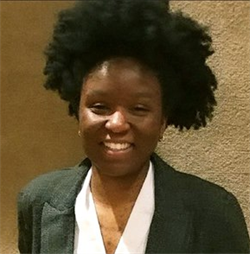 Anita Brown, a doctoral student in the Zachry Department of Civil Engineering at Texas A&M University, has received a scholarship as part of the Science, Mathematics and Research for Transformation (SMART) scholarship program. SMART is a scholarship for service program that funds the remainder of a recipient’s education in exchange for service in research roles to Department of Defense (DoD) entities following graduation. The goal of the scholarship program is to help produce the next generation of DoD science and technology leaders.
Anita Brown, a doctoral student in the Zachry Department of Civil Engineering at Texas A&M University, has received a scholarship as part of the Science, Mathematics and Research for Transformation (SMART) scholarship program. SMART is a scholarship for service program that funds the remainder of a recipient’s education in exchange for service in research roles to Department of Defense (DoD) entities following graduation. The goal of the scholarship program is to help produce the next generation of DoD science and technology leaders.
“I’ll be working with the U.S. Army Corps of Engineers in the Harbors, Entrances, and Structures branch of the Coastal and Hydraulics Laboratory,” said Brown on the nature of her work after the completion of her doctoral program. “They do a lot of work with hydraulic structures and navigation channels and other kinds of things that my civil engineering background can help me to investigate.”
Brown has already been acquainted with the Army’s engineer corps, having worked with them last summer on some finite element modeling research. It was there that Brown was told about the SMART program and encouraged to apply. As a civil engineering student, Brown is conducting research with Dr. John Niedzwecki, a Cain ’13 Chair and Regent’s Professor in the department.
“We’re looking at modeling debris flow during disasters such as floods and hurricanes,” Brown said. “When a storm comes and there is debris floating in a waterway, we’re looking at tracking the motion of that debris to see how it accumulates around a structure or waterway.”
Brown is currently in the process of evaluating current literature and models in relation to debris flow, looking to see how existing models might be improved, or future models developed.
“This kind of research is important because there is a lot of attention around understanding how debris accumulate in certain sections of the oceans and how it interacts with structures that may be near waterways.”
Brown’s goal with her research is to take the models that have been developed for specific scenarios and create a methodology that can extend to applications beyond what current models are used for.
“I’m excited to get the opportunity to fund the rest of my degree and also work in this capacity afterwards,” Brown said.